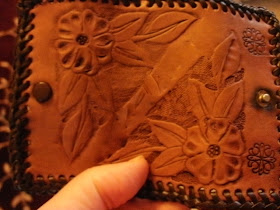I set some goals at the beginning of the year, so I thought I'd give a quick monthly update on my progress in March.
Reading:
- Goal - 18 Books and more than a year of Mother Earth News and Hobby Farm Home back issues (and yes, I've let the subscriptions to those magazines expire).
- March Progress - Read 2 books (7 books of 18 total), and 4 of the magazines (10 magazines of 38 total).
- Jewel by Bret Lott
- The Bean Trees by Barbara Kingsolver
Crafting:
- Goal - 12 completed projects, preferably one a month, with one being a quilted item and another being knit socks.
- March Progress - Started and completed the second toe-up knitted sock, completing the pair. I also crocheted a couple of much needed pot holders using this pattern. ( 3 projects of 12 total)
The socks are far from perfect, but functional and very comfortable. I love how they match, but aren't identical. I really enjoyed knitting them and I'm sure I'll knit more in the future.
Gardening:
- Goal - Organized planning, leading to an organized garden.
- March Progress - We finally bought a new printer and I was finally able to print pages from the garden planner I mentioned in earlier posts. I love it; it's a very functional and attractive planner to use.
We have begun planting and so far have potatoes and two new gooseberries bushes in the ground. I transplanted 76 strawberry plants into a new pyramid, the garlic we planted last fall is coming up, as are the perennial asparagus and rhubarb. We had big plans to continue planting early crops, but last weekend we were hit with our third mega-snowstorm in two months, so planting will have to wait a little longer.
Diet/Nutrition:
- Goal - To switch over to less harmful types of sweeteners and/or reduce sugars in our foods. To grow more of our food in our backyard.
- March Progress - I have decided that the only way for me to do this is to just do it! Despite the cost difference between plain granulated sugar and organic cane juice crystals, I used up the last bag of white sugar and I've vowed to eliminate it from sugar from our shopping list entirely. I consider cane juice crystals the next step up on the sweetener hierarchy. Not the best choice, but a better one. We also continue to use local honey, molasses (local when possible), Sucanat and real maple syrup as sweeteners, but not with any regularity.
Fitness:
- Goal - To join a local yoga class better flexibility, balance and overall health.
- March Progress - I still haven't made any effort to find a different class, but with gardening starting up, I'm not to worried. Gardening is great exercise!
Finances:
- Goal - To pay off our RV.
- March Progress - Shane has been working out of town a lot lately. He's been getting both a per diem allowance (there is usually a little left over after expenses) and at least a couple of hours of overtime on almost every check lately. That has helped me to continue to pay extra on each RV payment. I don't think I'll reach the goal of having it completely paid off this year, but the balance will be reduced considerably.





















